

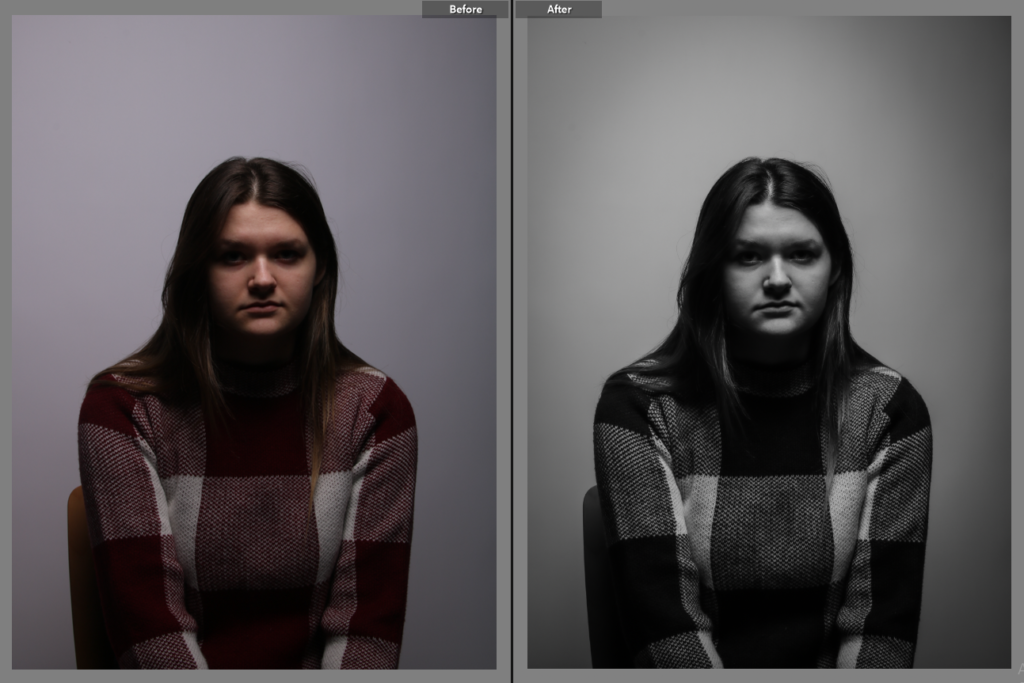



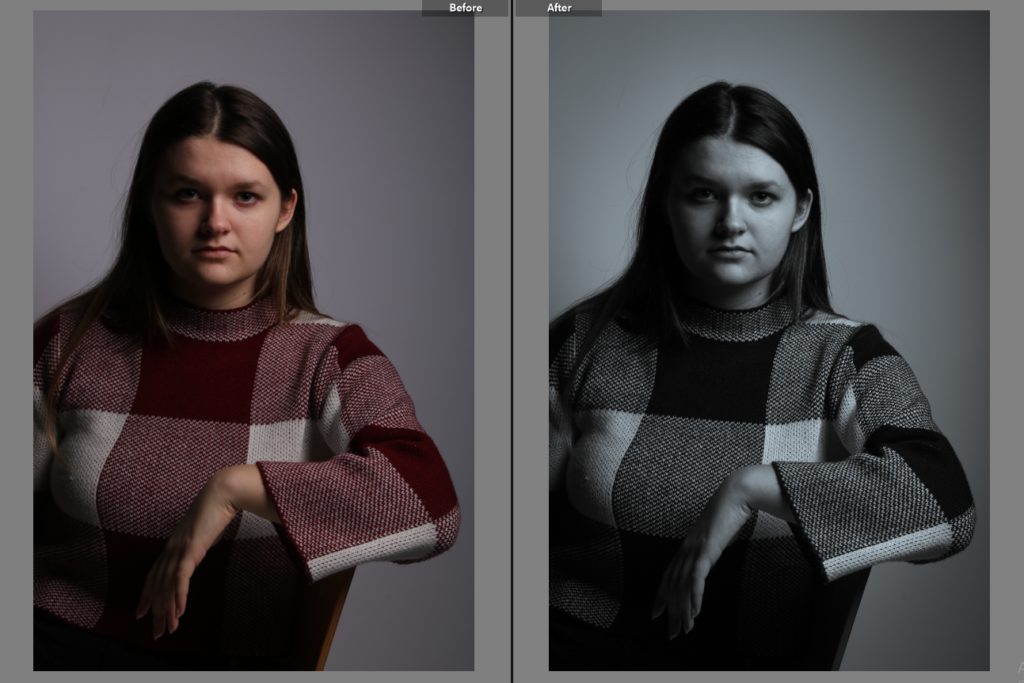

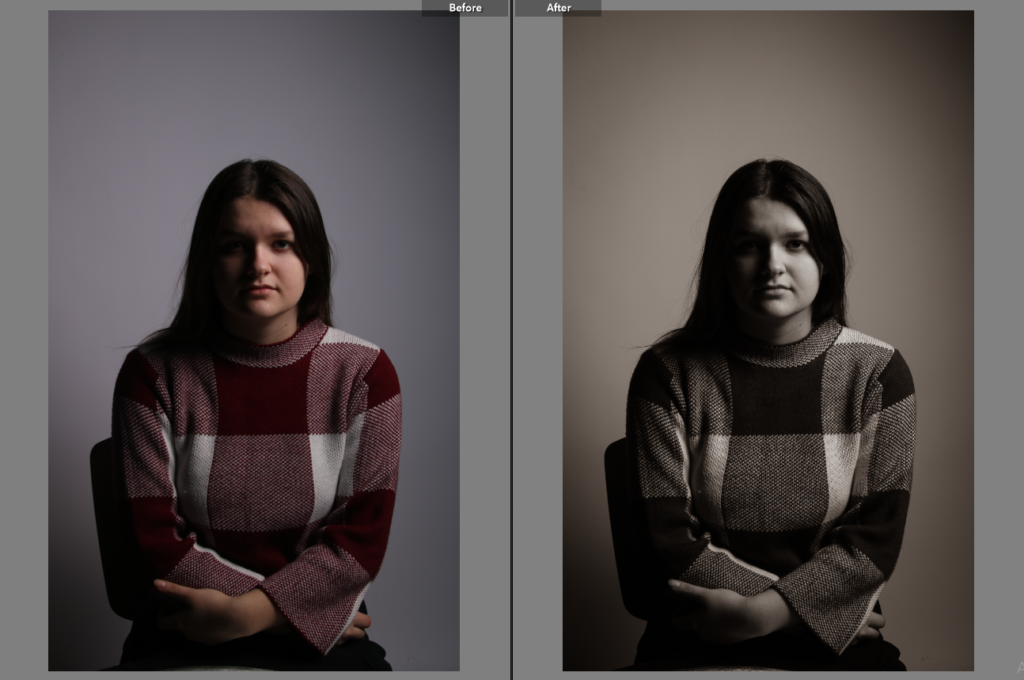



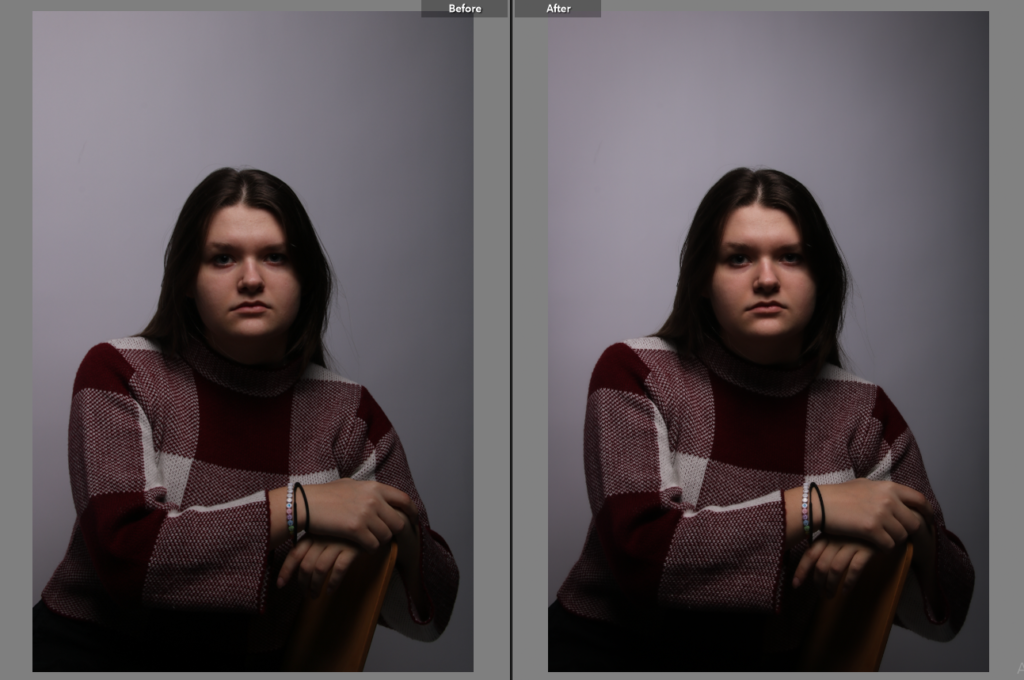

I edited these photos in both a modern and more vintage way, exploring different editing techniques that emphasised the butterfly and Rembrandt lighting.














I edited these photos in both a modern and more vintage way, exploring different editing techniques that emphasised the butterfly and Rembrandt lighting.















For these pictures, I focused on the butterfly and Rembrandt lighting techniques. I think I managed to get some successful outcomes, especially for the Rembrandt technique, the photos having deep contrasting tones and the illuminated triangle on the darker side of the face.
Introduction
Photography has been an extremely important aspect of our everyday life for many decades, being used as a tool for science, exploration of our world and self- expression. It has revolutionised the communication between people, creating an insight to different cultures and others’ opinions, thoughts and ideas. Since the beginning, techniques and ways of capturing photographs have been developed- some of which are still used today. The word ‘photography’ has a literal meaning of ‘drawing with light’, which was supposedly though of by a British scientist named Sir John Herschel (in 1839). The word is derived from Greek words ‘phos’ meaning ‘light’ and ‘graphê’ which means ‘drawing’ or ‘writing’.
Camera Obscura & Pinhole Photography
It has been estimated that camera obscuras date back to 400BC, when the first written account was recorded in that year, provided by a Chinese philosopher named Mo- tzu. There are many theories, however, that imply that it was discovered before this, yet was simply not recorded. But what actually is a camera obscura? A camera obscura is commonly described as a dark room (created with the use of dark cloth or any other flexible material covering any natural light sources) with a small opening allowing light to flood in, developing a upside down projection of the scenery outside opposite the hole after a few minutes. Moreover, the name ‘camera obscura’ is the Latin term for ‘dark chamber’, a perfect name for what it refers to.

Many to this day try to recreate the amazing experience of the camera obscura, one of which is Abelardo Morell, a Cuban photographer (born in 1948) who is known for renting out apartments/ rooms and transforming them into camera obscuras. He then photographs the breath-taking results which has resulted in him being a world- known photographer. The camera obscura or pinhole image is seen as a natural optical phenomenon.


Ibn al-Haytham (an Arab physicist) is seen as the inventor of the pinhole camera, even uncovering the explanation for why the photo or projection appears upside down (it is because light travels in a straight line and therefore the light from the top of the object after passing through the pinhole reaches the bottom of the camera screen and light from the bottom of the object passing through the pinhole reaches the top of the screen). Moreover, he is referred to as “the father of modern optics”, since he made significant contributions to the principles of optics and visual perception. Furthermore, the pinhole camera is a simple camera without a lens (but with a tiny aperture, the pinhole, instead) and was created to make it simpler to recreate the camera obscura effect on a smaller scale.

Despite using the most basic concepts of the camera, pinhole photography is still a popular technique attempted by photographers. The photos are captured on film, and it is important to note that the distance between the pinhole and film determines the angle of view. It is a great way of being introduced to analogue photography as it reduces it to its most basic elements. As there is no viewfinder, you are unable to know what you have captured until you develop the film, this aspect creating it a to an enjoyable and exciting experience.

Nicephore Nièpce & Heliography
Nicephore Nièpce (1765- 1833) was a French inventor. He is usually described as the inventor of photography, due to his development of heliography, developing his first heliograph in 1822. He used this technique to create what is known as the first permanent photograph ever, using a primitive camera to capture the image in 1826 or 1827. When describing his invention, Nièpce said: ‘The discovery I have made and which I call Heliography, consists in reproducing spontaneously, by the action of light, with gradations of tints from black to white, the images received in the camera obscura’.

It is the process of engraving a photo onto a material and is another word derived from Greek words ‘helios’ meaning ‘sun’ and ‘graphein’ translating to ‘writing’. There is a very specific process for heliography, which Niepce developed after many experiments with different reactants.
The process of Heliography:
Louis Daguerre & Daguerreotype
Louis-Jacques-Mandé Daguerre (1787-1851) was a French artist and photographer, who became known as one of the founding fathers of photography after developing the daguerreotype process. In 1829, Daguerre partnered with Nièpce. After his partners sudden death (1833), Daguerre continued to experiment, and eventually evolved the process which would eventually be known as the daguerreotype. There is a famous quote by Daguerre that gives us an insight on how he viewed his discovery, it being: ‘I have seized the light, I have arrested its flight‘. This proves how aware he was of the science behind his invention, knowing it was all down to light.

He went public with his invention in 1839 and at a joint meeting of two academies the invention was announced and described in general terms, but all specific details were withheld. Soon after, news of the development of the daguerreotype quickly spread, leading to it to be called in Daguerre’s name.
The daguerreotype is a direct-positive process, creating a highly detailed image on a sheet of copper plated with a thin coat of silver without the use of a negative. The process proved to be very specific and had to be carefully done. Firstly, the silver-plated copper plate had to be cleaned and polished until the surface looked like a mirror. Next, the plate was sensitized in a closed box over iodine until it took on a yellow-rose appearance. The plate, held in a lightproof holder, was then transferred to the camera. After exposure to light, the plate was developed over hot mercury until an image appeared. To fix the image, the plate was immersed in a solution of sodium thiosulfate or salt and then toned with gold chloride.

It is believed to be the earliest known photograph of a person. The image shows a busy street, but because the exposure had to continue for four to five minutes the moving traffic is not visible. At the lower right, however, a man appears to be having his boots polished, and both him and the man polishing his boots were motionless enough for them to be captured.
Henry Fox Talbot & Calotype
William Henry Fox Talbot (1800-1877) was an English scientist, inventor, and photography pioneer who invented the calotype process. Shortly after Daguerre’s invention of the daguerreotype was announced 1839, without details, Talbot asserted priority of an invention based on experiments he had begun in early 1834. He introduced the calotype in 1841, using paper coated with silver chloride. A famous quote by him shows how he knew more could be done to develop photography, and how calotypes were simply another step in this process, the quote being: ‘I do not claim to have perfected an art but to have commenced one, the limits of which it is not possible at present exactly to ascertain’.

The paper dipped in the chemical was exposed to light in a camera obscura and the areas hit by the light became dark in tone, creating a negative image. The developing process permitted much shorter exposure times in the camera than the previous techniques, down from one hour to one minute. The developed image on the paper was fixed with sodium hyposulfite. The “negative,” as Talbot called it, could produce any number of positive images by simple contact printing upon another piece of sensitized paper.
Robert Cornelius & Self-Portraiture
Robert Cornelius (1809-1893) was an America photographer. He is known for taking the first self- portrait (a daguerreotype) and for developing the photographic plate that he used to take the first photograph in America. With the help of the chemist Paul Goddard, he attempted to perfect the daguerreotype technique and when he was 30 years old, he took the famous photograph of himself. In 2014, it was considered as being the first photographic self- portrait ever produced, even being described as the first ‘selfie’.

This daguerreotype produced an off- centre image of the photographer, depicting him with crossed arms, dishevelled hair and a neutral expression. Cornelius took this image in front of his family’s gas lighting business. To this day, this portrait is seen as one of the most important photographs ever taken. Cornelius created a makeshift camera with the use of an opera glass made into the lens, allowing him to create this daguerreotype. Taking this simple picture was a much more complex task than it would be in the present day, as the lighting had to be perfect and he had to stay motionless and look into the lens for around 15 minutes, due to the incredibly slow shutter speed of the camera. The photographer went on to create many more daguerreotypes, mostly capturing his hometown.

Julia Margeret Cameron & Pictorialism
Julia Margaret Cameron (1815- 1879) was a British photographer who is considered one of the most important portraitists of the 19th century. She is known for her close- up portrait photographs of both men and women, portraying them as characters from mythology, Christianity and literature. Her portraits illustrated the people as sensitive and full of innocence, quite a different approach than most portrait photographers took during that time (as most attempted to present their models as intelligent in a very formal manner). Being an upper-class woman, she mostly photographed fellow upper-class citizens, creating around 900 photographs in her short 12-year-old career.

One of her most famous photographs, showing a delicate young women surrounded in plants. Despite taking up photography quite late in her life (at the age of 48), she still managed to create some beautiful and unique photos, causing people to believe she was a naturally- talented photographer. Her first camera was a gift from her daughter and son in law, and in response to the gift, Cameron said “From the first moment I handled my lens with a tender ardour, and it has become to me as a living thing.” Even now, many photographers see her as an inspiration for their work, and even critics cannot deny the sheer lusciousness and uniqueness of her photographs.
Henry Mullins & Carte-de-Visite
Henry Mullins started working in London in the 1840s and moved to Jersey in July 1848, setting up a studio known as the Royal Saloon, at 7 Royal Square. Many Jersey folk paid half a guinea to get their photograph taken by the photographer, and Mullins described them as more open minded than the people in London. He was the first professional daguerreotype photographer to come to Jersey and create a portraiture business.

He specialised in creating ‘cartes de visite’, which are small photographs which were patented in Paris by photographer André Adolphe Eugène Disdéri in 1854. They didn’t gain worldwide use until 1859 but when they did, the invention was so popular that its usage became known as “cardomania” and spread quickly throughout Europe and then to America and the rest of the world. During his career, it has been estimated that Mullins made 9600 of these photos of different people around the island, some even being very influential people.

Clarence Philip Ouless
Clarence Philip Ouless became one of the most popular commercial photographers in Jersey in the late 1800s, working from premises in New Street, a very popular location in St Helier for Victorian photographers. In 1883 he bought the negative collection of the late Henry Mullins, and many of these passed, along with his own photographs, to La Société Jersiaise‘s Photographic Archive in 2006.

He created daguerreotype photos of different people, mostly upper- class, presenting them in a formal way. This photograph shows a man in formal attire, looking away from the camera lens, creating a sense of mystery yet full of intelligence.
word count: 1,824
Camera Obscura & World of Illusions (2020), What is a Camera Obscura. Camera Obscura: https://www.camera-obscura.co.uk/article/what-is-a-camera-obscura
Wikipedia (last edited on- 2023), Pinhole Camera. en.wikipedia.org: https://en.wikipedia.org/wiki/Pinhole_camera
Parallax Photographic Coop (2018), Guide to Pinhole Photography. parallaxphotographic.coop: https://parallaxphotographic.coop/beginners-guide-to-pinhole-photography/
Bedi.K (2019), Heliography. Photoion: https://www.photoion.co.uk/blog/encyclopaedia/heliography/#:~:text=Heliography%20is%20a%20photographic%20process,taken%20from%20a%20nature%20scene
Wikipedia (last edited in 2022), Heliography. en.wikipedia.org: https://en.wikipedia.org/wiki/Heliography
Library of Congress (2020), The Daguerreotype Medium. loc.gov: https://www.loc.gov/collections/daguerreotypes/articles-and-essays/the-daguerreotype-medium/#:~:text=revived%20the%20process.-,The%20Process,surface%20looked%20like%20a%20mirror
Augustyn. A (2017), Calotype. brittanica.com: https://www.britannica.com/technology/calotype
Wikipedia (last edited on- 2021), Robert Cornelius. en.wikipedia.org: https://en.wikipedia.org/wiki/Robert_Cornelius
Maloney.W (2022), Robert Cornelius and the First Selfie. loc.gov: Robert Cornelius and the First Selfie | Timeless (loc.gov)
Rosenburg. K (2014), Ardent Victorian at the Lens. nytimes.com: ‘Julia Margaret Cameron,’ at the Metropolitan Museum of Art – The New York Times (nytimes.com)
Jerripedia (last edited in 2022), Henry Mullins. theislandwiki.org: Henry Mullins – Jerripedia (theislandwiki.org)
Wikipedia (last edited on- 2019), Carte de Visite. en.wikipedia.org: Carte de visite – Wikipedia
Jerripedia (last edited in 2022), Clarence Philip Ouless. theislandwiki.org: https://www.theislandwiki.org/index.php/Clarence_Philip_Ouless
It is a lighting technique commonly used for portrait photography. This type of lighting was named after Rembrandt Harmenszoon van Rijn (a Dutch painter). It is a way of lighting a face so that an upside-down light triangle appears under the eye(s) of the subject.


In the early 20th century, a Hollywood director named Cecil DeMille introduced the spotlight and Rembrandt lighting was one of the most famous effects achieved by this. It became a popular way of capturing celebrities as it portrayed them in an interesting and dramatic way.


This technique is a perfect way of creating a dramatic photo as it instantly creates deep shadows and contrast. The upside down triangle draws the views attention to the eye, the key area of the face in a portrait.
How to Create a Rembrandt Lighting Setup
Light: The position of the light source is vital in creating different lighting techniques. Rembrandt lighting is created by the single light source being at a 40 to 45-degree angle and higher than the subject. Use can use both flashlights and continuous lights.
Lens: A 50mm works really nicely for portraits and will give a nice depth of field if you’re shooting at a shallow aperture. But a 35mm will give you a wider point of view and is great to fit more of the body in of your subject.

Another popular studio lighting technique. Its name comes from the butterfly-shaped shadow that forms under the nose because the light comes from above the camera. You may also hear it called ‘paramount lighting’ or ‘glamour lighting’.


It is a common studio lighting technique due to it being very flattering way of capturing the model. The shadows make the cheekbones and jawline appear sharper, making the face look thinner and more defined.

How to Create a Butterfly Lighting Setup
Lighting: Butterfly lighting requires a key light that can be a flash unit or continuous. If continuos, it can be artificial or natural. In other words, you can use strobes, speedlights, LEDs or even the sun.
A butterfly lighting effect refers to the setup and not to the quality of light – it can be soft or hard light depending on the effect you want.

It is Italian for lightdark and is the use of high and strong contrasts between light and dark tones. The concept of chiaroscuro emerged during the 15th century but it became truly developed during the 16th century in Italy and Flanders during the era of the Renaissance, becoming a popular technique of art.

The painting consists some deep contrast between dark shadows and highlights, creating this defined, dramatic look.

This can recreated in photography, using a single light to only illuminate certain areas of the face/ body.
How to Create the Chiarascuro Effect

A single light is used to only lighten the most prominent areas of the face, creating a dark and high contrast look. A reflector can be used to illuminate areas of the face that aren’t originally lightened by the key light.








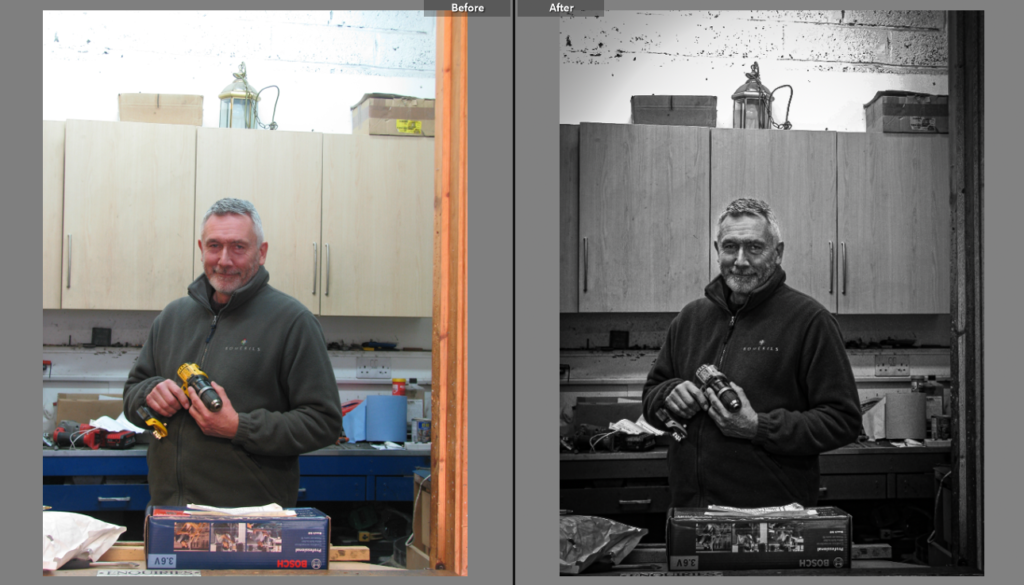



















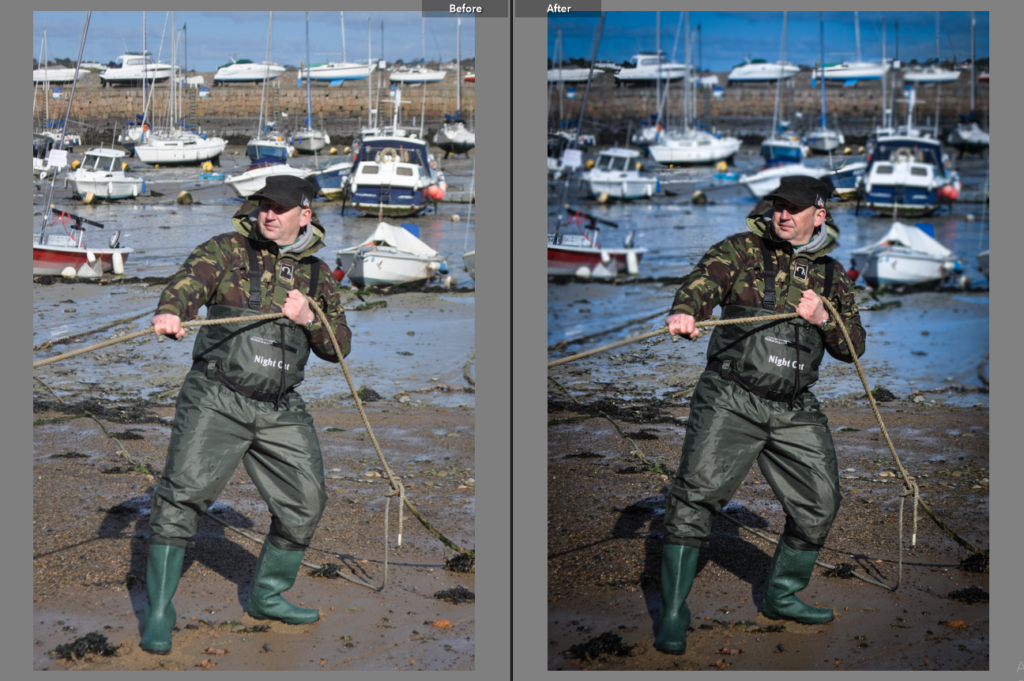






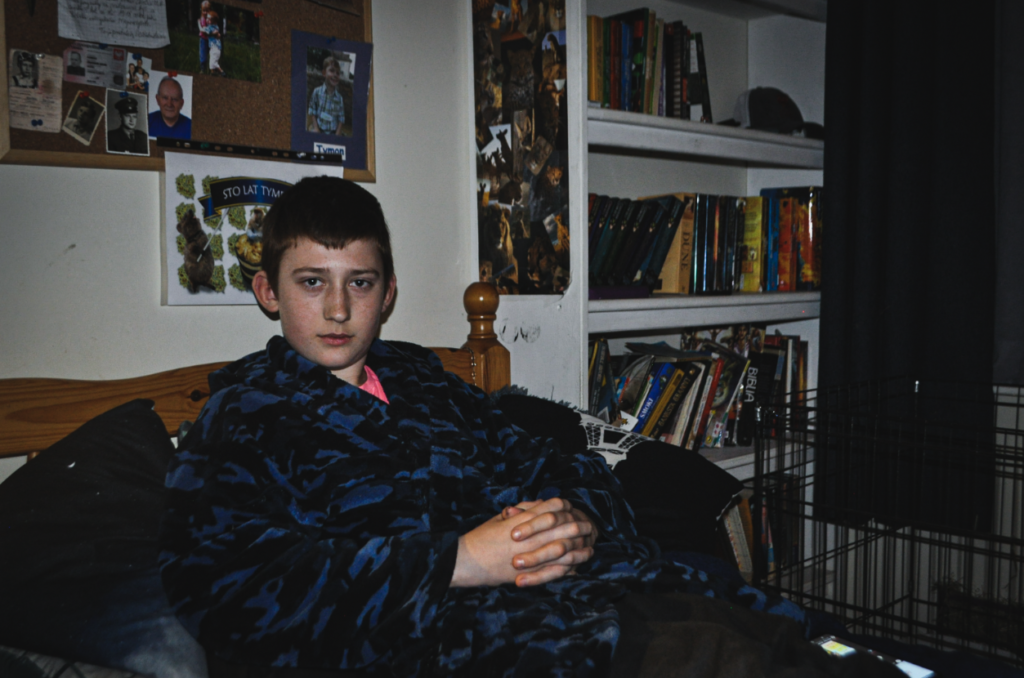

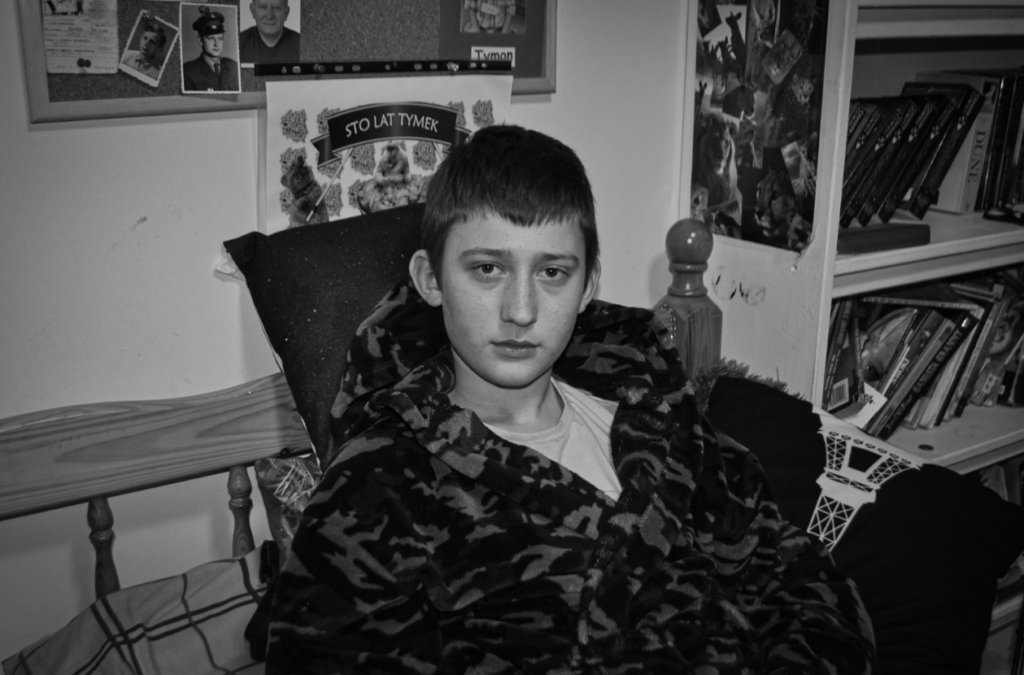








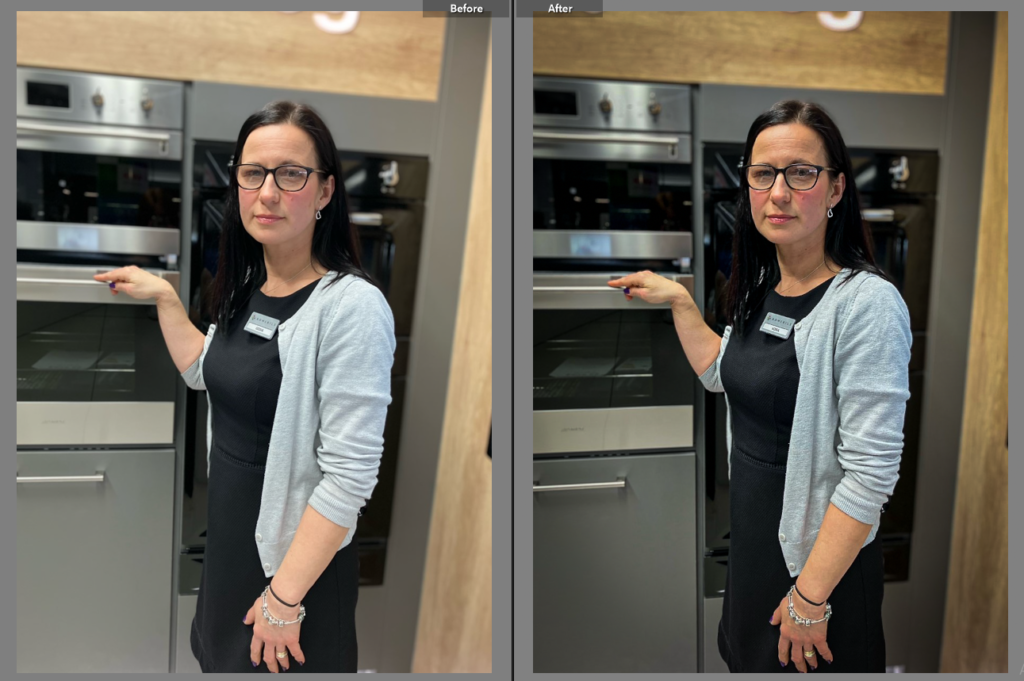





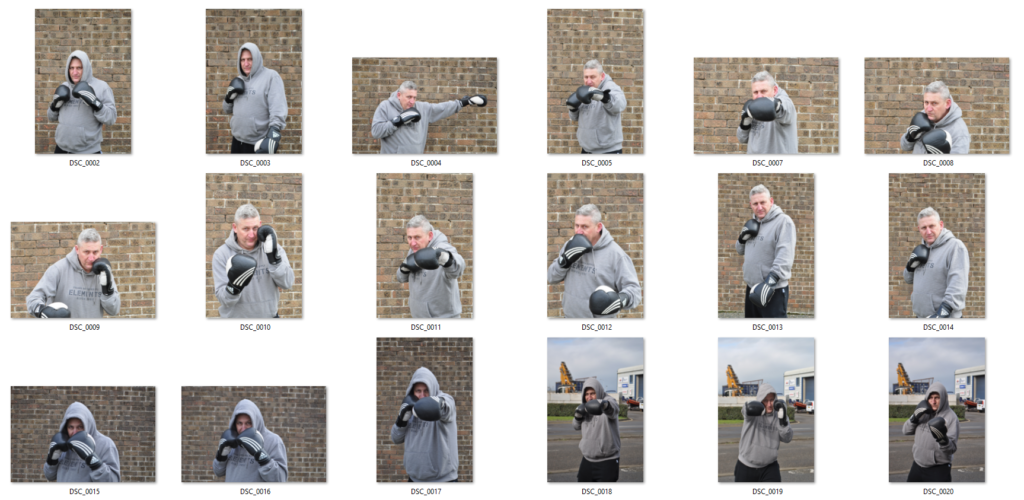



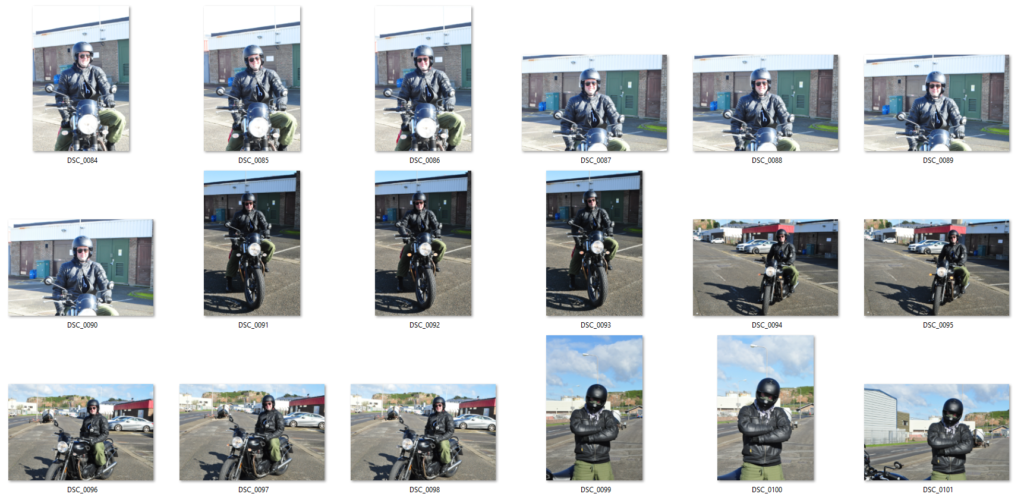


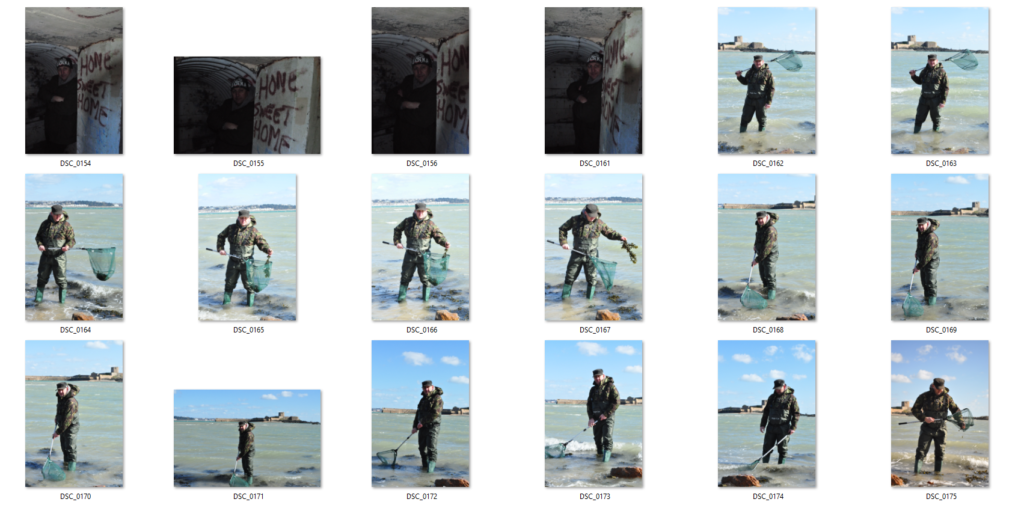




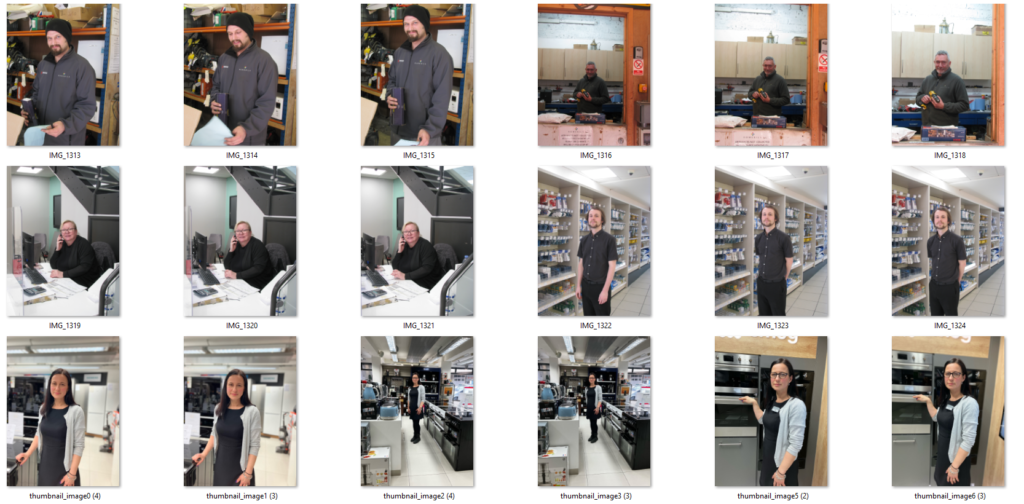

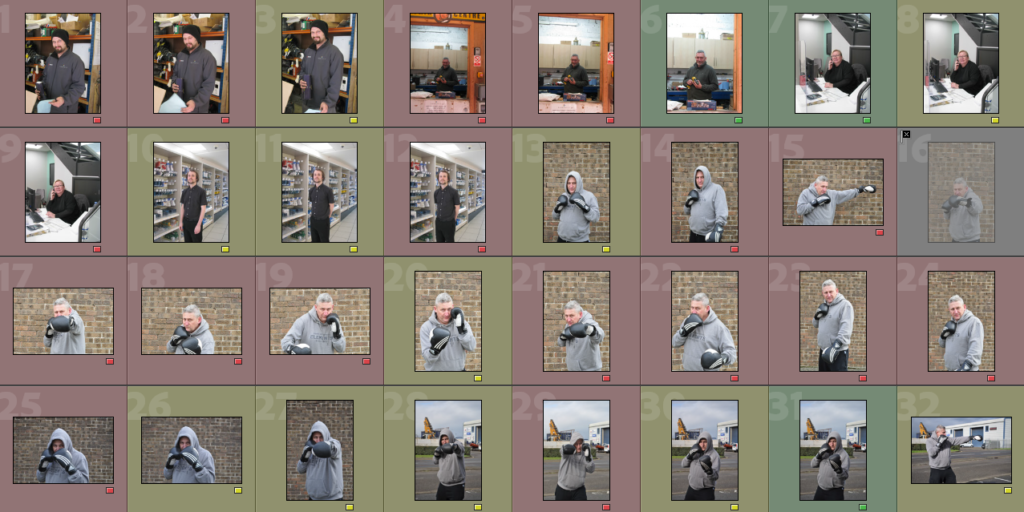







I used the colour rankings to filter my work. Red/ rejected means I will not be editing the photo, yellow means I might come back to the photo and green means I will definitely edit the photo.
Alec Soth is an American photographer, based in Minneapolis. Soth makes “large-scale American projects” featuring the midwestern United States. He was born in 1969 ( currently aged 54 years), in Minneapolis, Minnesota, United States.
Alec Soth’s practice was influenced by the American documentary photography tradition of Walker Evans, Robert Frank and Joel Sternfeld. He chose the open road for his projects, often with a list of the shots he wants attached to his steering wheel. New York Times art critic Hilarie M. Sheets wrote that he has made a “photographic career out of finding chemistry with strangers” and photographs “loners and dreamers”.
From 2012–2014, Soth embarked on a series of state-by-state road trips to make a portrait of present-day America.
“I’ve never been comfortable photographing people I know, myself included. I guess I prefer the mystery of strangers”
– Alec Soth






Here are some examples of his photographs and they were all taken in different countries around the world. The photos consist of different angles and close up, half body and full body shots, showing how he experiments with his work.

This is one of Soth’s most famous photographs ‘Charles‘ which he made during his road trip along the Mississippi river. His series ‘Sleeping by the Mississippi’ consists of many different people he found interesting, this man Charles being one of them. Soth was initially drawn to the mans house, which consisted of a glass roof. After meeting his wife, Soth wanted to meet the interesting man he later described as a ‘dreamer’ and after finding out about the man’s life and how he called the top room his ‘cockpit’, Soth decided to photograph him on top of one of his roofs, having him hold a pair model planes in hand he built with his daughter.
The photo was taken face on, capturing a full body shot of the man. He appears to be wearing an outfit he is comfortable in, possibly being something to do with his interests. The composition of the photo places Charles in the centre, his strong, stable stance presenting him as a confident individual who takes pride in his work (the two model airplanes in his hands). Behind him, we can notice the empty, bleak landscape which appears to be surrounding his home. The photo was composed so that a slither of the wall of his home was seen, the bright blue colour contrasting with the dull colouring around. This could portray how Soth saw Charles compared with other people- a dreamer that stood out to him in a crowd. The left side of him is slightly more illuminated by the cool natural light due to the slight shadow the roof casts onto him, causing there to be a wider range of tones in the picture. The different materials scattered around him indicate he uses them to upgrade his home, once again showing us how he is in his favourite place that he loves working on. This photo is staged, since the man is engaging with the camera and his body facing towards it, suggesting that Soth talked to the man before, deciding on the pose, props and landscape behind him to create this powerful environmental photograph.
August Sander was a German portrait and documentary photographer. Sander has been described as ‘the most important German portrait photographer of the early twentieth century’. He was born in the 17th of November, 1876 in Herdorf, Germany. He passed away on the 20th of April, 1964 in Cologne, Germany.
His main journey began in the mid 1920s, when he began his decades-long project ‘People of the Twentieth Century‘. Though Sander never completed this exceptionally ambitious project, it includes over 600 photographs divided into seven volumes and nearly 50 portfolios. This project became extremely popular and made him an iconic portrait photographer.
Sander wanted his black and white portraits to ‘honestly tell the truth about our age and people’, and despite him clearly achieving this, his photos are still very subjective and leave a lot to interpretation. Sander’s work continues to be a source of inspiration for generations of photographers, including Walker Evans, Diane Arbus, Bernd and Hilla Becher, and Rineke Dijkstra. Sander also changed the way many of us think about portraiture, informed the way we see gender and class, and shaped discussions around the archive as art and the idea of the documentary
“If we can create portraits of subjects that are true, we thereby in effect create a mirror of the times”
– August Sander






These are some portraits from his series ‘People of the Twentieth Century‘, presenting a range of different people from his time. His portraits consist of some half body and full body shots, creating an interesting project.

This portrait is one of the most famous from his series ‘People of the 20th Century‘, and shows a bricklayer casually posing in front of stacks of bricks. The photo is a face on shot, capturing a full- body picture of the man, allowing us to view his entire outfit, further indicating his job type. The composition of the photo causes the man to be framed by the two stacks of bricks, causing him to be the area of focus and making this a more effective portrait. The photo is in black and white, allowing the photo to showcase a wide tonal range, highlighting the different textures throughout the piece. Moreover, the photo includes side lighting, coming from the right side of him, and creating a split lighting effect on his face, without over or underexposing either side. The man appears to be standing in a very casual way, propping his elbow on one of the brick piles. This creates a informal mood throughout the photo, also being quite neutral due to his lack of expression. The positioning of his body portrays confidence, suggesting how this has been his occupation for a long time and he is skilled at it. His bright clothing next to the dimly lit bricks creates contrast, making the man stand out even more. The bricks create an interesting pattern, a sense of repetition- perhaps portraying the long years the man has given to this job. This photograph is clearly staged, however this could indicate how Sander had a conversation with this man before making this portrait of him, the environment and pose pf the man being carefully chosen. This photo was a member of Sander’s series ‘People of the Twentieth Century‘, and this photo shows us an aspect of the working class at the time, the portrait presenting this man as confident and skilled, most likely implying how Sander himself saw this person.
who: I will photograph a variety of different people in their environment for example my family and people who work with my mum (showing the different roles they place at her workplace). I will capture my siblings interests by taking photos that include them and their hobbies.
what: All the different people will be in their most common place of work/ environment, causing the photos to portray their life in a single shot. I will get some people to hold an object that they often use/ is important to them to further display their story.
where: I will take some pictures in Romerils (where my mum works) and some pictures at home to have a variety of different environments.
when: I will take the pictures throughout the day so that there is enough natural light to enlighten the people. I will do it on different days to capture both warmer and cooler light in my photos.
how: For the pictures at home, I will play around wit different lighting techniques as well as utilise the natural light from the windows. For the photos taken outside, I will use the natural light to illuminate the person, as well as some artificial light from inside the building.
why: These photos will be a way of portraying each photographed person’s daily life/ interests in a single shot, using the environment around them to accentuate this.


Technical -how was the photo taken
Visual -what can we see in the image
Conceptual -why was the photo taken / presented
Contextual -who, when, where etc…the story, background, impact
This image by Jewish photographer, Arnold Newman, was taken in 1963 and includes a man situated in some sort of train station. The photo consists of a dark and mysterious atmosphere, the dimly lit figure creating a sense of dread and fear. The older man appears to be wearing a suit- indicating that he is important and perhaps has some sort power over the environment around him. The photo’s sinister mood is accentuated by the man’s smirking expression and clasped hands placed under his chin, the idea of something horrible happening. Two pillars are on either side of the man, framing him and creating a midground in the photo. The picture was taken so that the entire station could be seen behind the man, creating a depth of field that made the photograph appear much deeper. There is a very wide tonal range in the photo, the base being dark and the top including some sky light- causing this to be a complicated photograph since it includes both under and overexposure. It appears as though two lights were placed under the mans face, casting two shadows and making the man seem even scarier and almost evil. The picture was taken using a low exposure, little light being let into the picture and, therefore, allowing the spots of light to heavily contrast with the rest of the image. The composition of the photo adds to the mood of the picture, the man being placed perfectly in the middle emphasising the idea of his authority and importance. The intense eye contact the man maintained with the camera/ photographer, creates the idea that he was challenging him, showing him how he still has the same power he previously had. The mans older age suggests he gained his control when he was younger, perhaps implying that an event took place that gave him this power. The positioning of his body creates a triangular shape, triangles being seen as a strong shape typically being associated with evil characteristics. Due to this being an environmental portrait, there is an indication of the environment being an important aspect of this mans life, perhaps the very thing that gave him the power that his strong and smug stance suggests.
I was doing some work for Newsweek, mainly covers, and they asked me to photograph Alfred Krupp. Krupp, a German industrialist, who used slave labor during World War II. When the workers were too weak to produce, he just shipped them off to Auschwitz to die. So when the editors asked me to photograph him I refused. They asked why. I said, Because I think of him as the devil, and they said, Fine, that’s what we think. So I was stuck with the job.
When I arrived at the factory and was told by Krupp’s PR people that the sitting was off, I demanded that my photographs be shown to Krupp so that he could decide for himself. The startled PR guy complied, and then came back and said, Herr Krupp would like to see you. Krupp told me, These are beautiful pictures. You must photograph me.
I asked to see the factory, and noticed a huge casting that I thought would make a good background. They moved it just for me, and built a special platform so that we would be overlooking the factory. I lit Krupp’s face from slightly below, using two small lights. It was just an okay picture until I asked Krupp to lean forward. He leaned forward and my hair stood on end. He looked like the devil.
This was the recount that Arnold Newman told when questioned about the photograph. He used the photo to portray how he truly saw the man, an evil and dark human who did such terrible things. Alfred Krupp was an industrialist who supplied trains for the transportation of people to concentration camps and it is believed that soon after the photograph was taken, Krupp was captured and imprisoned. It can be inferred from Newman used this photo as a sort of revenge for his family and other Jews, capturing the true evil in this man and showing it to the world, in response to the disgusting acts he contributed to during WW2. The photo was taken at a train station in Germany, at the very station that people were taken away over a decade before.